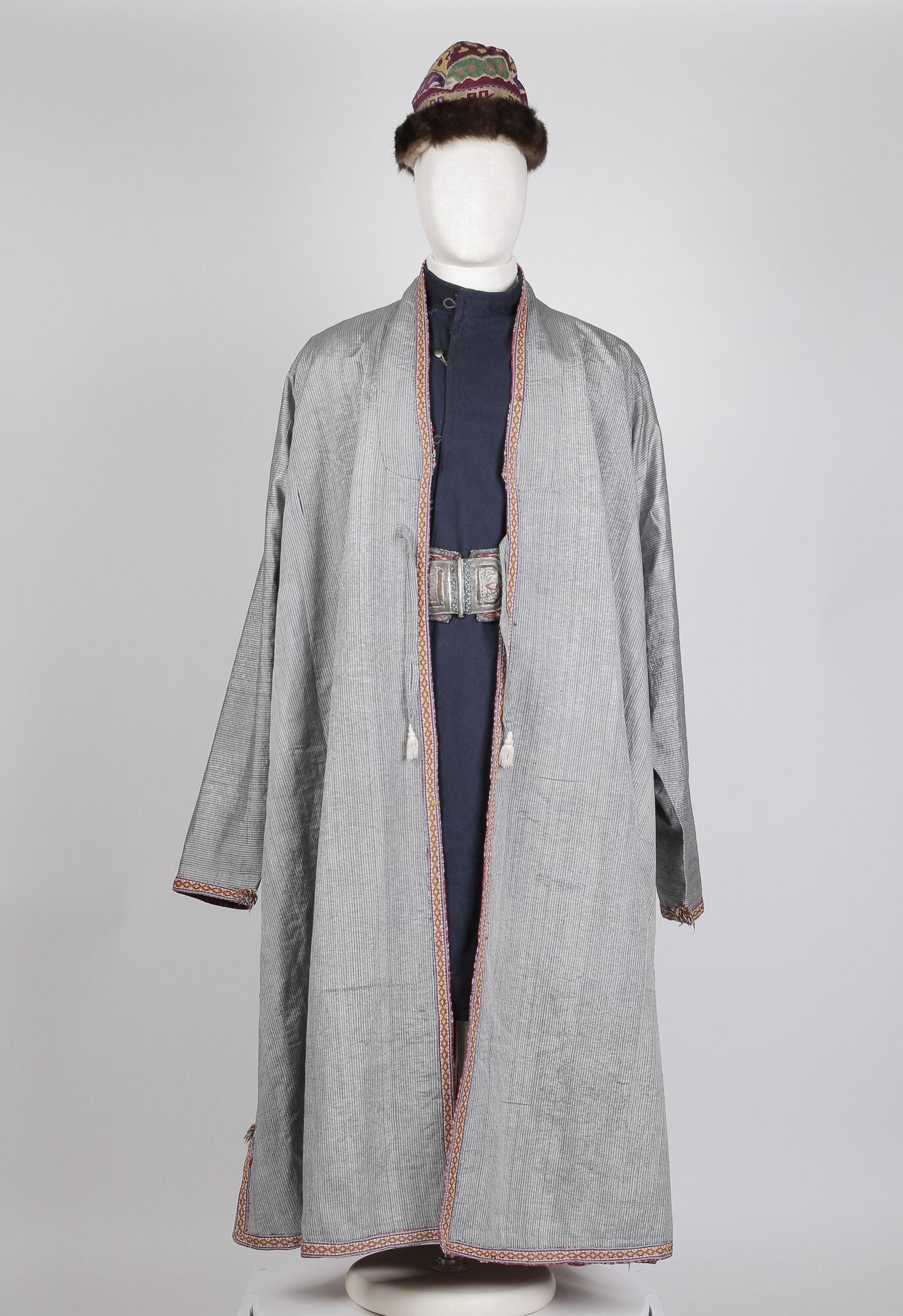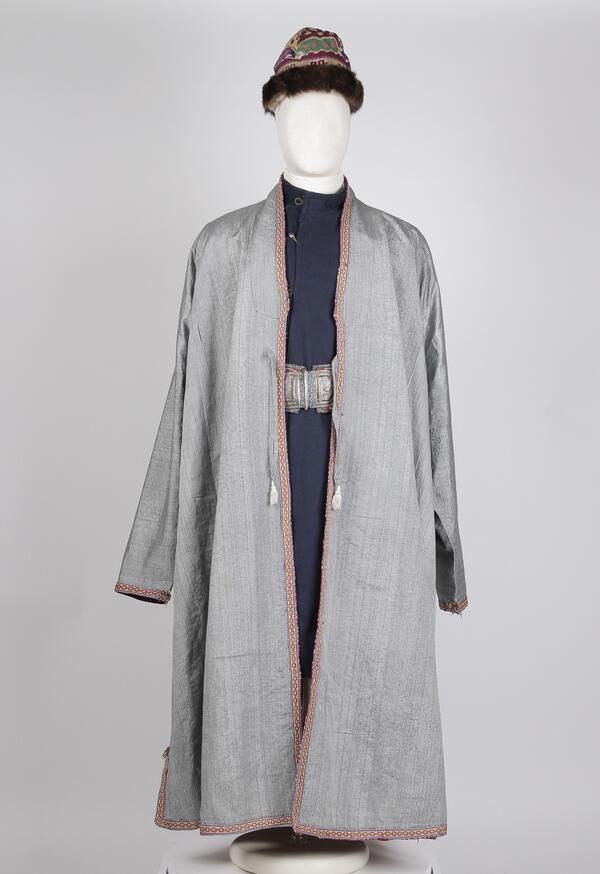The Zimmi, literally “people of the covenant”, is a general name for all peoples who professed a religion other than Islam but lived in Muslim countries. According to the law of zimmis, Jews and Christians in Islamic territories had a number of restrictions on social and administrative rights: they were forbidden to marry Muslims, ride horses, own weapons, and live in houses with more than one floor. Also, zimmis had to dress according to the rules in order to be distinguished from the indigenous population. These laws began to take shape in the Islamic Caliphate in the early 8th century and underwent many local changes in different countries. In part, they also affected Bukharian Jews.
In Central Asia, non-Muslims were allowed to wear only a hat and forbidden to wear a turban, which signified one’s affiliation with Islam. Jews could wear only simple dark clothes and belt themselves with a rope. These regulations were mandatory for Jews if they appeared among Muslims. According to the observations of contemporaries, in their homes and quarters, where no Muslims entered without permission, Bukharian Jews dressed as they wished.
A traditional attire of Bukharian Jews did not differ much in composition and cut from that of their neighbors — Uzbeks and Tajiks. Differences were noticeable in traditions and preferences: Bukharian Jews wore coats and other clothes made of satin fabrics, while Uzbeks and Tajiks used them only in everyday life at the beginning of the 20th century: for blanket covers and kurpacha mattresses used for sitting on the floor.
Bukharian Jews had hats of various forms: with a conical crown on a fur lining, with a narrow or wider trimming, with a spherical crown, covered with monochrome or patterned velvet or embroidered with multicolored silk.
For their kaftans and camisoles, Bukharian Jews used a wide variety of fabrics of different colors and quality, manufactured by local craftsmen and in factories. Whereas neighboring Muslim population had its own traditions of using fabrics for clothing within different social, gender and age categories, Bukharian Jews chose what materials to use only on the basis of their financial possibilities and personal taste.
In Central Asia, non-Muslims were allowed to wear only a hat and forbidden to wear a turban, which signified one’s affiliation with Islam. Jews could wear only simple dark clothes and belt themselves with a rope. These regulations were mandatory for Jews if they appeared among Muslims. According to the observations of contemporaries, in their homes and quarters, where no Muslims entered without permission, Bukharian Jews dressed as they wished.
A traditional attire of Bukharian Jews did not differ much in composition and cut from that of their neighbors — Uzbeks and Tajiks. Differences were noticeable in traditions and preferences: Bukharian Jews wore coats and other clothes made of satin fabrics, while Uzbeks and Tajiks used them only in everyday life at the beginning of the 20th century: for blanket covers and kurpacha mattresses used for sitting on the floor.
Bukharian Jews had hats of various forms: with a conical crown on a fur lining, with a narrow or wider trimming, with a spherical crown, covered with monochrome or patterned velvet or embroidered with multicolored silk.
For their kaftans and camisoles, Bukharian Jews used a wide variety of fabrics of different colors and quality, manufactured by local craftsmen and in factories. Whereas neighboring Muslim population had its own traditions of using fabrics for clothing within different social, gender and age categories, Bukharian Jews chose what materials to use only on the basis of their financial possibilities and personal taste.



